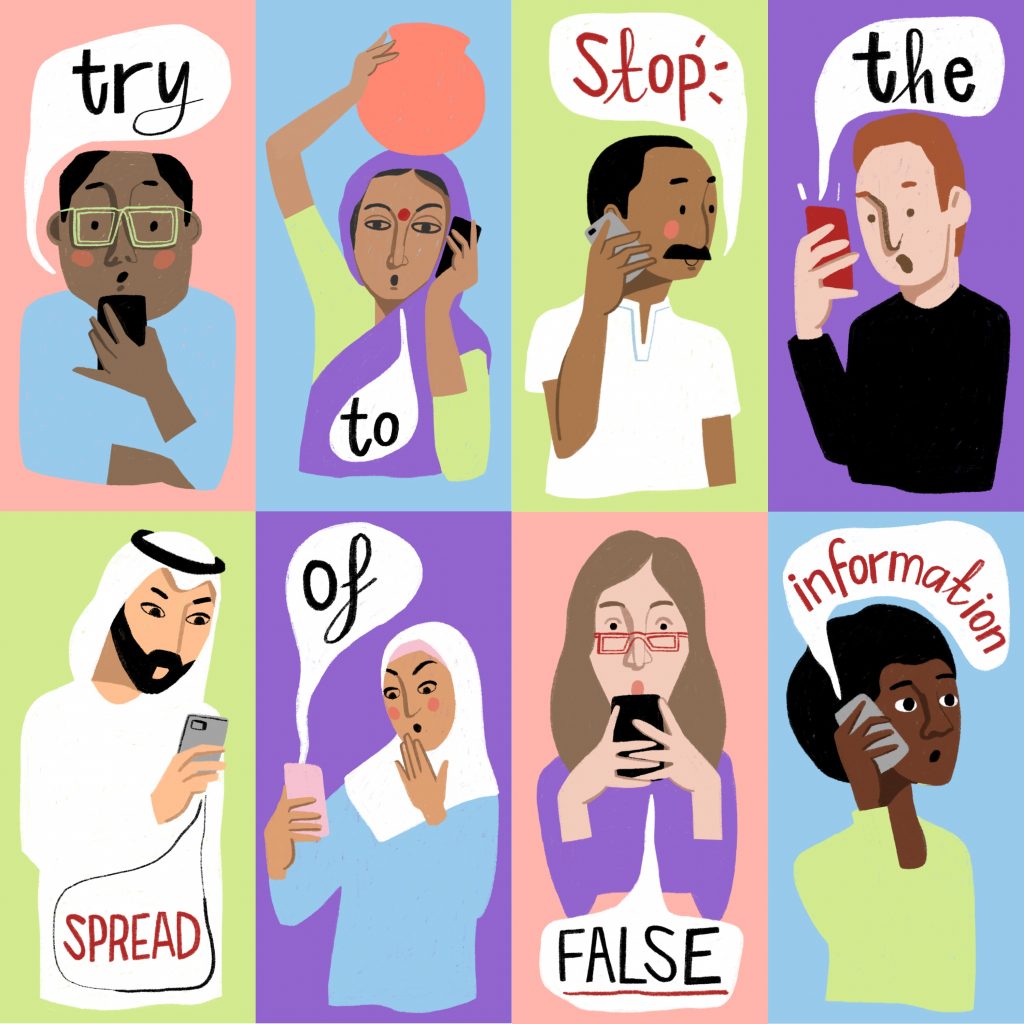The entirety of the internet is such that if you tried to read it all, it would take you 57,000 years, even if you read for 24 hours a day.
The amount of “information” available to us within seconds is staggering, but how much of that information is actual knowledge?
Multiple studies, including this one from MIT, tell us fake news is viral, so it spreads farther and faster than facts.
What can you do to help separate fact from fiction?
I had been employing my own 30-second short cut to fact-checking, but I stumbled upon one that sums up the steps beautifully. Plus, it’s easy to remember.
S.I.F.T.
This is a practical approach to checking sources and claims you’re not quite sure are accurate. Mike Caulfield, director of blended and networked learning at Washington State University Vancouver crafted this model. Using it helps promote media literacy and critical thinking.
The idea here is to engage in a quick process that allows you to “fact-check” on some basic level. This is not a technique useful for in-depth primary research, but it may help you discern if what you’re seeing on your timeline is accurate, or if your colleague is out in left field with the latest “hot takes” on some major national news story.
Note: I have pulled the steps below from Mr. Caulfield’s blog, but they also contain my own variations and suggestions.
STOP
When you see an article, a claim, or a page and start to read it, stop. Ask yourself if the website or information source is known and/or credible. You must also “stop” yourself from trying to read every piece of information connected to this topic, or you will be off with Alice down the rabbit hole.
Ask if what you’re reading is from an accredited source of news? Who is this writer? What are the claims s/he is making? The last “stop” is to ask yourself if you have any personal biases about what you are reading and seeing. Just because we don’t like something or disagree with it doesn’t necessarily mean it’s untrue.
INVESTIGATE
When I would come home from school talking about all the crazy things kids in my class were saying, my mom would almost always reply, “Consider the source.” She was not-so-subtly telling me that perhaps my fifth grade pal wasn’t the renowned expert I thought.
What is this source? Does it have a history of being partisan or bias? Does the publication have an agenda? Are your reading about how great the new iPhone is on an Apple-friendly website or an Apple-sponsored blog?
Ask yourself if you are willing to bet your own credibility on what you are reading as fact.
FIND MORE/FACT CHECK
Obviously, all of what I am suggesting here is about fact-checking, but is there a way to verify a specific piece of information or two in what you are reading? That can serve as a quick barometer to the bulk of the piece.
Are you able to verify through other source what the central claim is of this post or article? Can you find more? Can you verify the timeliness, the relevance and the authority of the claim? Unless what you’re reading is a primary research study published in a scientific journal, chances are, it’s somewhere for you to find in multiple places of note. In short, how many times has this source been cited?
TRACE THE CLAIMS
How many times have you been in an argument with someone who quotes you back to you, and the quote is, in fact, something you said, but in the heat of the argument what you said is taken totally out of context? Raise your hand here.
When we read or see something online, we must do our best to try to put that statistic, quote or even video back into the original context. Can you trace back what you are reading to the original source?
If you saw a headline that read, “9 out of 10 want Trump for POTUS in 2024,” you might think that’s quite a story – unless you learned the number came from a straw poll at a GOP political action committee. Backtracking to find the original claim can shed a whole new light on what you are reading.
Please take a moment to digest this important side note: Tracing source material is becoming even more challenging thanks to “deepfakes” and other more sophisticated ways the bad guys have to manipulate video and data.
A “deepfake,” for example, is a video that is so-well doctored, an untrained eye cannot tell the difference between what is real and what is fake. ABC News recently ran a story about the growing numbers of these clips and how difficult it is to identify them.
So, if online miscreants can manipulate data, produce deepfakes and yank stats out of context, how can you believe anything you read? Good question.
Nothing is full-proof, and the S.I.F.T. method is good for, as I mentioned, basic fact-checking, but it will help reduce the chances you become victim to fake news or “alternative facts.”
My favorite way to check a source for bias (which then informs my own thinking), is the Ad Fontes Media Interactive Media Bias Chart. You may not like what you find, but I encourage you to check out the methodology of this group. You will be able to see for yourself how news sources are ranked (bias and readability), and it will give you new perspective on what kind of information you are consuming.
We all know a healthy diet matters to our bodies, so why would our information diet not matter to our brains?
If you try this 30-second short cut a few times, I guarantee it will become your favorite way to help you sort the fakes from the facts.
